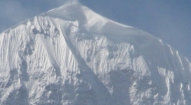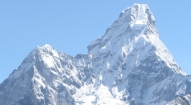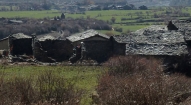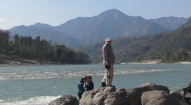- Home |
- Why With Us |
- About Us |
- Booking |
- Contact Us |
- Site Map
- Home
-
Nepal
-
Trekking
- Arun Valley with Gokyo Lakes
- Everest Base Camp Trek
- Everest- A Living Culture Exploration
- Everest Explore
- Everest Base Camp (via Thame) Trek
- Everest Base Camp with Kala Patthar
- Everest Comfort Trek
- Everest High Passes with Ama Dablam Base Camp
- Everest Mani Rimdu Festival Trek
- Everest Nagpa La Trek
- Everest with three high passes
- Gokyo Ri, Chola Pass & Chukung Ri with Kala Patthar
- Gokyo with Everest Base Camp
- Jomsom - Muktinath
- Jomsom - Muktinath
- Khayar Lake Trek
- Manaslu and Tsum Valley with Larkya La
- Upper Mustang Trek
- Manaslu High Circuit
- Manaslu, Tilicho Pass & Upper Mustang
- Annapurna Base Camp Trek
- The Annapurna Circuit Trek
- Annapurna Panorama
- Nar and Phu Valley Trekking
- Nepal Rhododendron Trek
- Royal Trek
- Saribung Trek and Expedition
- Annapurna Sanctuary Trek
- The Annapurna Sunrise Trek
- Expedition
-
Rafting
-
Peak Climbing
-
Tours
- Kathmandu-Chitwan-Jungle Tour with visit to Pokhara
- Dawn to Dusk Tour
- Historical, Natural & Cultural Tour with Camping
- Kathmandu Valley Temple Tour
- Temple - Panorama - Jungle Tour
- Taste of Nepal
- Central Nepal Tour
- Explore Nepal Tour & Trek
- Nepal Cross-country Tour
- Best of Nepal Tour & Treks
- Kathmandu valley rim Tour & Treks
- Nepal Culture Tour
- Introduction to Nepal Tour & Treks
- Nepal at a glance Tour & Treks
- Wonders of Nepal Tour & Treks
- Glimpses of Nepal Tour & Treks
- Through the Silhouette Tour & Treks
- Tent and Temple Tour
- Kathmandu-Chitwan-Pokhara Tour
- Historical, Cultural City and Jungle Tour
- Nepal Wildlife Tour
- Nepal Panorama Historical Tour
- Nepal Adventure Tour
- Nepal Pilgrimage Tour
- Ghalegaun-Ghanapokhara Homestay Tour
- Jungle Safari
- Adventure Sports
-
Trekking
- Tibet
-
Bhutan
-
India
- Yoga Tour
- About Us
-
The Great Himalayan Trail
-
Short Tours/Treks


Trekking In Nepal
Nepal is divided into three regions. Himalayan range and its watershed area in the north, and Mahabarat range and Churia hills in the middle and Terai (plain) in the south. Himalayan range includes 8 of the 14 highest peaks of the world that has altitude more than 8000 meter: Mt. Everest (8848m), Kanchanjunga (8586m), Lhotse (8516m), Cho Oyu (8201m) and Dhaulagiri (8167m), Mt. Makalu (8463m), Manaslu (8163m) and Annapurna I (8091m). It covers about 16% of the total land area of Nepal with elevation range from 2500m to 8848m-(Everest). The middle hills known as Mahabharata range encompass 65% of the area with altitude range from 500 to 3000 meters above sea level.
The Southern part of the country (plain area known as Terai) covers 17% of the land with altitude ranging from 100 to 300m and is the home to world’s best known National parks (covering a total of 19.70% of country’s total land) and has much character of the great plains of India, from which it extends. This region comprises both cultivable land and dense jungle and is inhabited by wild elephant, tiger, and other typically South Asian fauna. The Terai contains about one-third of Nepal's population and makes up about one-fourth of the total area.
Though the entire length and breadth of this Himalayan Kingdom is a paradise for trekkers, still and in case, if you are wondering about where to trek in Nepal and which area mostly satisfies your passion, please see these brief overview, among the many, below:
The Annapurna Region
The most popular trekking route in Nepal takes you through some of the most stunning scenery on earth. You will be walking through rhododendron forests over the foothills of the Annapurna and Dhaulagiri ranges and through the Kali Gandaki Gorge, the deepest in the world. Treks to the Annapurna region start from the lake-side resort town of Pokhara. Maximum elevation 4,600m.
The Everest Region
The highest mountain in the world continues to lure adventurers as ever. A hair-raising flight lands you at the airstrip of Lukla (2,850 m) from where you begin walking to the famous Sherpa village of Namche Bazaar and on to Tengboche monastery with the mesmerizing peak of Ama Dablam hovering in the sky. Then it’s over the glaciers to the foot of Everest for the view of a lifetime. Maximum elevation 5,546m
The Langtang Region
The third most popular trekking region in the Kingdom lies directly to the north of Kathmandu. The Gosaikund lakes situated here are a much-revered Hindu pilgrimage site. Langtang offers baffling extremes in topography and climate conditions. In just one day you can traverse five different vegetation zones trekking from the subtropics to timberline. Maximum elevation 4,480m.
The Remote Areas
For those who want to get off the beaten track, there is the trail to Mustang (maximum elevation 5,400m) north of the Annapurna range which offers mind-boggling landscapes and mystical cultures. Manaslu in west-central Nepal (maximum elevation 5,213m) offers a diverse range of pristine eco-systems. Makalu in the eastern part of the country (maximum elevation 5,350m) takes you through isolated valleys and High Mountain passes to the base of the fifth highest peak on earth. Dolpo in northwest Nepal (maximum elevation 4,500m) captivates visitors with its Phoksundo Lake and unparalleled scenery. And the Kanchenjunga region in the Far East boosts some of the finest trekking in the country with spectacular landscape and natural scenery. The Kanchenjunga is still a virtually untrekked valley with elusive snow leopards and almost equally challenging peaks that will leave you thrilled forever.
The Mustang Region
The Mustang region of Nepal is one of the most popular hiking destinations in the country. The terrain here has been described as a “dessert in the mountain”. Hikers will find trekking to this region very rewarding. The landscape is unusual to say the least. The region is almost treeless and experienced hikers will enjoy the steep rocky terrain. The hills here give visitors panoramic views of many of the mountain peaks. Hikers are encouraged to take a camera and take time to enjoy the views that the Mustang region has to offer.
The Terai Region:
The Terai or the plain areas of Nepal lie in the South of the country adjoining India and is a massively fertile region. This region also refers to the southern lowlands of Nepal, which form part of the Gangetic plains, and also the river valleys located between the Shiwalik and Mahabharat ranges (generally referred to as the Inner Terai). Strategically, the Terai has been identified as the region with the greatest immediate economic potential for the forest sector in Nepal, as the region possesses forests of high economic value and is also one of the more culturally and biologically diverse areas in Nepal. The continuous stretch of dense forests from east to all the way to the west of the country was once popularly known as Hariyo Ban Nepalko Dhan (Green forests are Nepal's wealth). It reminds of the vast resources that exist in the country which are still largely unexploited.
Annapurna Region
 The Annapurna region in Central Nepal is the most geographically and culturally diverse region for trekking and appears at its finest throughout the year. Stretched over 2, 6000 sq.km the area with deep valleys and...
The Annapurna region in Central Nepal is the most geographically and culturally diverse region for trekking and appears at its finest throughout the year. Stretched over 2, 6000 sq.km the area with deep valleys and...
Read MoreEverest Region
 Everest Region, the renowned world heritage site and the connotations of great challenge and achievements has been one of the most popular trekking destinations for trekkers and mountaineers from around the world. Home t...
Everest Region, the renowned world heritage site and the connotations of great challenge and achievements has been one of the most popular trekking destinations for trekkers and mountaineers from around the world. Home t...
Read MoreOff the Beaten Path Treks
 Five most popular off-the-beaten-path treks in NepalNaar and PhuAt the village of Koto, four days into the Annapurna Circuit trail, a river branches north through an amazing narrow, wooded gorge squeezing between sheer c...
Five most popular off-the-beaten-path treks in NepalNaar and PhuAt the village of Koto, four days into the Annapurna Circuit trail, a river branches north through an amazing narrow, wooded gorge squeezing between sheer c...
Read MoreNew Treks
 ...
...
Read More
Trekking in Nepal
Expeditions In Nepal
Rafting in Nepal
Tours in Nepal
All rights reserved.


